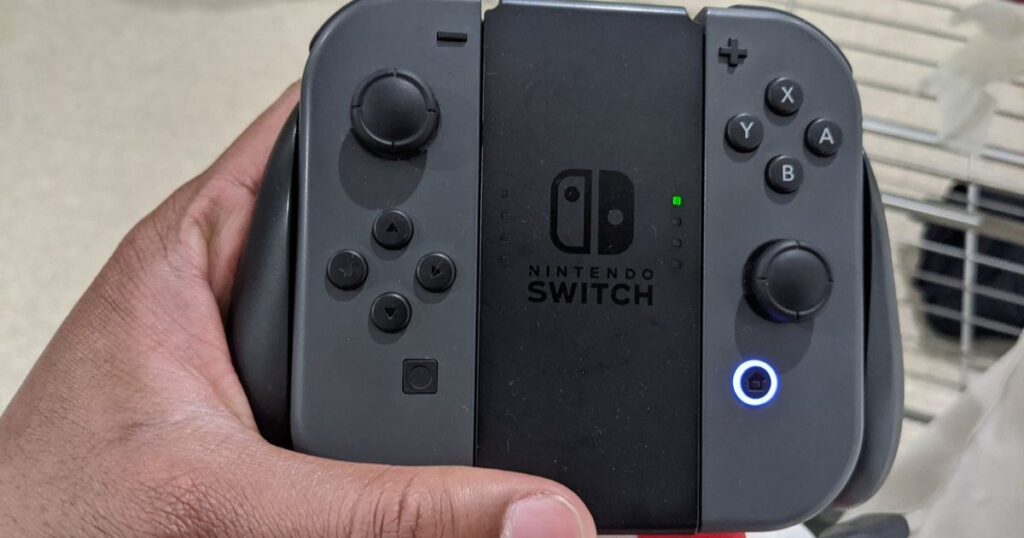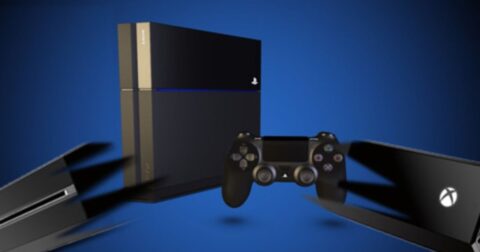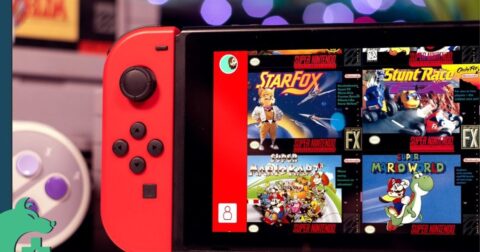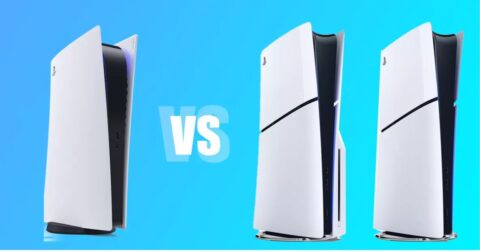Have you ever turned on your Nintendo Switch only to be greeted with the confusing message “Nintendo button will be locked out”? If yes, you’re not alone. Many Nintendo Switch, Switch Lite, and OLED users have recently reported facing this issue, which can be both frustrating and confusing, especially if you’re in the middle of gaming or trying to access your console’s settings.This message typically appears when certain buttons on your Nintendo device are temporarily disabled, either due to software glitches, parental controls, controller calibration issues, or system restrictions. While it might sound alarming at first, the good news is that this problem is usually easy to fix with a few simple troubleshooting steps.
In this blog post, we’ll dive deep into what the “Nintendo button will be locked out” message means, explore the common causes behind it, and provide a step-by-step guide on how to fix the issue. By the end, you’ll know exactly what to do to get your console back to normal and how to prevent this from happening again in the future.
What Does “Nintendo Button Will Be Locked Out” Mean?
When you see the message “Nintendo button will be locked out” on your Nintendo Switch, Switch Lite, or OLED model, it usually means that certain buttons on your console or controller are temporarily disabled. This lockout is a built-in safety or control feature rather than a permanent hardware failure.
In most cases, this occurs when:
- Parental controls are enabled to restrict gameplay or limit access to certain features.
- System software detects a setting that temporarily disables specific buttons.
- The console is in a special mode where some inputs are intentionally restricted, such as during updates or resets.
- There’s a controller calibration issue causing the system to block certain buttons until it is fixed.
Essentially, this message is the nintendo switch lite frozen wont turn off way of telling you that your button inputs are restricted for a specific reason. It doesn’t always indicate a serious hardware problem. In many cases, you can resolve it easily by checking your console’s settings, What Is the Y Button on the Wii updating the firmware, or recalibrating your Joy-Con or Pro Controller.Up next, we’ll explore the most common causes behind this message so you can understand why it happens in the first place.
Possible Causes of the Button Lockout
If your Nintendo Switch shows the message “Nintendo button will be locked out”, don’t panic. This problem is typically caused by minor settings, software glitches, or issues with the controller. Below are the most common reasons behind this problem:
1. Parental Controls Are Enabled
Nintendo’s parental control system allows parents to limit gameplay time, restrict specific features, or disable certain buttons.
- If parental controls are active, some buttons may be intentionally locked to prevent unauthorised actions.
- You can check this by going to System Settings → Parental Controls and reviewing the restrictions.
2. Temporary System Software Glitch
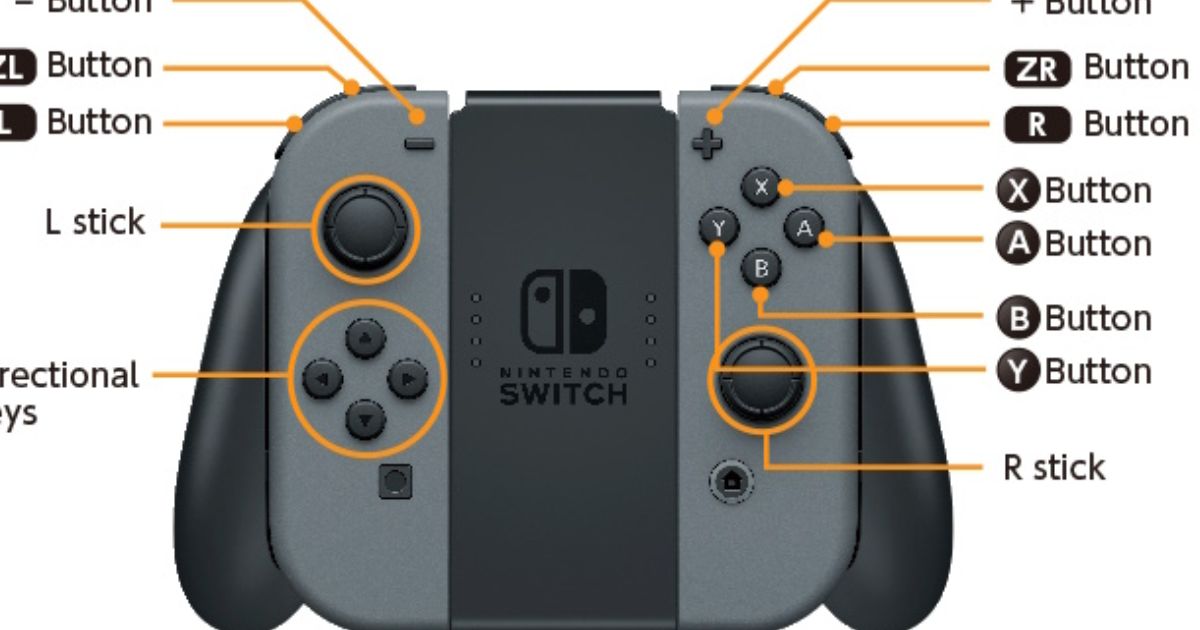
Sometimes, the console’s firmware experiences minor bugs that trigger random button lockouts.
- This usually happens after a system update, interrupted downloads, or corrupted temporary files.
- Restarting the console or updating to the latest firmware typically resolves this issue.
3. Controller Calibration Issues
If your Joy-Con or Pro Controller isn’t calibrated correctly, the system may disable certain buttons temporarily to prevent incorrect inputs.
- Misaligned joysticks or sticky buttons can confuse the console.
- Recalibrating your controllers typically resolves this issue.
4. Account or Region-Based Restrictions
In some cases, account restrictions or region-specific settings can cause button lockouts:
- Using a child account or an account linked to a specific region may limit certain features.
- Updating your account settings or logging in with a parent/primary account can often fix this.
5. Overheating or Hardware Protection Mode
When your Nintendo Switch overheats or detects abnormal conditions, it may temporarily disable button inputs to protect the system.
- Ensure your console has proper ventilation.
- Avoid using it in extremely hot environments.
6. Third-Party Accessories or Software Conflicts
Unverified third-party controllers, docks, or adapters can sometimes interfere with button inputs, causing the lockout message to appear.
- Disconnecting these accessories and using official Nintendo hardware can prevent conflicts.
7. Ongoing System Update or Maintenance Mode
If the console is installing a system update or in maintenance mode, some buttons will remain locked until the process finishes.
- Wait for the update to complete before attempting to use all buttons again.
How to Fix the Nintendo Button Lockout Issue
If your Nintendo Switch displays the nintendo switch frozen game message, don’t worry. Most of the time, you can quickly solve it without having to send your console in for repair. To fix the problem, use these detailed troubleshooting techniques:
1. Restart Your Console (Soft Reset)
Temporary software issues can occasionally be resolved with a simple restart.
- For three seconds, press and hold the Power button.
- Select Power Options → Restart.
- Once the console reboots, check if the buttons are working again.
2. Check Parental Control Settings
If parental controls are active, certain buttons and features may be intentionally locked.
Steps:
- Go to System Settings on your Nintendo Switch.
- Scroll down to Parental Controls.
- Enter your PIN to access settings.
- Remove or adjust restrictions to unlock buttons.
If you forgot your parental control PIN, you can reset it via the nintendo switch lock screen password Can You Connect Two PS5 Controllers to a PC via Bluetooth Parental Controls app or the official website.
3. Update Your System Software
An outdated firmware version may cause unexpected button lockouts.
Steps:
- Connect your console to the internet.
- Go to System Settings → System → System Update.
- If an update is available, install it and restart your console.
4. Recalibrate Your Controllers
Controller calibration issues are one of the most common causes of button lockouts.
Steps:
- Go to System Settings → Controllers and Sensors.
- Select Calibrate Control Sticks or Calibrate Motion Controls.
- To change your Joy, adhere to the screen’s directions. Pro. Controller.
5. Disconnect and Reconnect the Controllers
Sometimes, the system fails to recognise controller inputs correctly.
Steps:
- Detach the Joy-Con controllers from your console.
- Please wait a few seconds, then reconnect them until you hear the click sound.
- Test the buttons again.
6. Reset Controller Settings
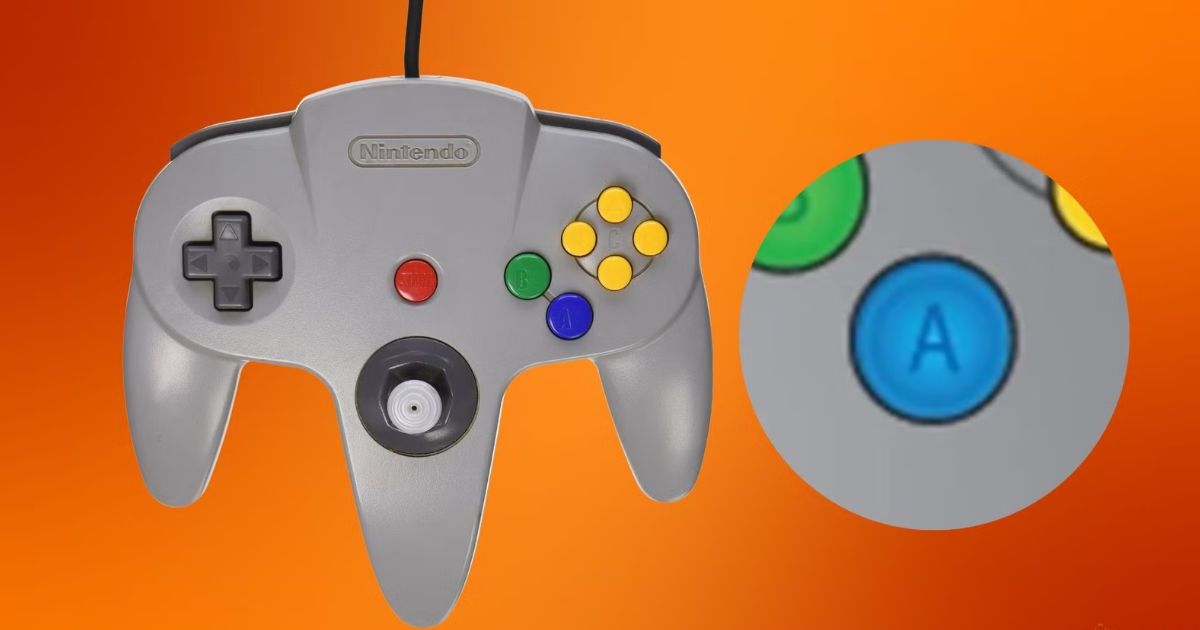
If recalibration doesn’t work, resetting your controller settings may help.
Steps:
- Navigate to System Settings → Controllers and Sensors.
- Select Disconnect Controllers.
- Repair your Joy-Con or Pro Controller from scratch.
7. Perform a Hard Reset (Force Restart)
If your console is frozen and unresponsive, a hard reset may fix the issue.
Steps:
- Hold down the Power button for 12–15 seconds Switch 2 Sales Expectations Nintendo and Market Impact until the screen goes black.
- Press the Power button again to turn the console back on.
8. Avoid Third-Party Accessories
Unverified docks, charging adapters, or controllers can cause conflicts and lead to button lockouts.
- Use only official nintendo switch freezes when sd card is inserted accessories to avoid compatibility issues.
9. Factory Reset Your Nintendo Switch (Last Resort)
A factory reset may resolve chronic issues if none of the above fixes are effective. Lockouts.
This will erase all saved data unless you back it up.
Steps:
- Go to System Settings → System → Formatting Options.
- Select Initialise Console.
- Follow the on-screen instructions to reset your console.
10. Contact Nintendo Support
If you’ve tried everything and the issue persists, it could be a hardware-related problem.
- Visit the Nintendo Support website for repair options.
- If your console is still under warranty, Top 10 Best Switch Indie Games You Need to Play Now you might get free repair or replacement.
Quick Troubleshooting Checklist
- Restart your console
- Check parental control restrictions
- Update system firmware
- Recalibrate or reset controllers
- Avoid third-party accessories
- Perform a hard reset if frozen
- Contact Nintendo support if nothing works
Now that we’ve fixed the issue, the next section will focus on how to prevent button lockouts in the future so you won’t have to deal with this problem again.
Preventing Future Button Lockouts
Fixing the “Nintendo button will be locked out” issue is only half the battle; taking the proper preventive measures can help you avoid facing this problem again in the future. Here are some practical tips to keep your Nintendo Switch, Switch Lite, or OLED running smoothly:
1. Keep Your System Updated Regularly
Nintendo switch 2 frequently releases firmware updates to improve performance and fix bugs that may cause button lockouts.
Go to System Settings → System → System Update regularly to ensure you’re always on the latest version.
2. Manage Parental Control Settings Properly
If you share your console with family members, improper parental control configurations can accidentally restrict buttons and features.
- Set clear restrictions for child profiles only.
- Use the Nintendo Parental Controls app to manage settings easily.
- Keep your PIN safe and avoid accidental lockouts.
3. Recalibrate Controllers Periodically
Over time, the Joy-Con and Pro Controllers may become misaligned, Windows 11 Wireless Xbox Controller Not Working resulting in input detection issues.
- Go to System Settings → Controllers and Sensors.
- Select Calibrate Control Sticks and Calibrate Motion Controls.
- Perform recalibration at least once a month for smoother gameplay.
4. Avoid Using Unverified Third-Party Accessories
Using cheap, unverified docks, chargers, or controllers can interfere with button inputs and cause lockout problems.
- Always use official Nintendo-certified accessories for better compatibility and safety.
5. Keep Your Console Cool and Ventilated
Overheating can cause the system to temporarily disable buttons to protect itself.
- Avoid playing in extremely hot environments.
- Place your console in a well-ventilated area.
- Clean dust from the vents regularly to prevent heat buildup.
6. Handle Joy-Con Controllers Carefully
Physical damage or dirt buildup can make certain buttons stick or become unresponsive.
- Clean your controllers gently with a soft, dry cloth.
- Avoid dropping or applying excess pressure on the buttons.
- Store controllers safely when not in use.
7. Back Up Your Data Regularly
In rare cases, fixing button lockout issues may require a factory reset. Keeping backups ensures you don’t lose valuable game data.
- Go to System Settings → Data Management → Save Data Cloud.
- Enable automatic cloud backups via your Nintendo Switch Online subscription.
8. Schedule Routine Maintenance Checks
Just like any other gadget, your Nintendo console benefits from occasional health checks:
- Test all buttons once in a while to ensure responsiveness.
- Reconnect and test Joy-Con functionality regularly.
- Address minor issues early before they escalate.
By taking these precautions, you can drastically lower the chances of encountering the “Nintendo button will be locked out” message again.
When to Contact Nintendo Support
While most “Nintendo button will be locked out”, Simple troubleshooting can resolve problems, although occasionally the problem might be beyond your control. If you’ve tried all the solutions mentioned earlier and the issue still persists, it may be time to reach out to Nintendo Support for professional assistance.
Here are some situations where contacting Nintendo is the best option:
1. Persistent Button Lockouts Despite Troubleshooting
If you’ve:
- Restarted your console
- Updated the system software
- Recalibrate or reset the controllers
- Checked parental controls
- …and the issue still exists, it could indicate a deeper system error that requires expert help.
2. Hardware-Related Controller Problems
Sometimes, the problem isn’t in the software but in the Joy-Con or Pro Controller hardware itself:
- Buttons are stuck, unresponsive, or physically damaged.
- The Joy-Con repeatedly disconnects or fails to sync with the console.
- The Pro Controller doesn’t respond even after recalibration.
In these cases, Nintendo can repair or replace defective controllers.
3. Console Overheating or Hardware Protection Mode
If your console frequently overheats and locks out buttons to protect itself, there might be an internal cooling system issue.
- Nintendo Support can diagnose and repair potential hardware faults.
4. Account or Parental Control Lock Issues
If your Nintendo account or parental control PIN is causing button restrictions and you’re unable to reset it manually, Nintendo can assist you in recovering or unlocking your account safely.
5. Out-of-the-Box or Post-Update Malfunctions
If the problem started immediately after unboxing the console or following a system update, it could be a factory defect or firmware-related issue. Nintendo Support can provide:
- Replacement consoles are if under warranty.
- Official firmware fixes if the problem is widespread.
6. Warranty and Repair Options
Nintendo offers free repairs or replacements for eligible devices under warranty.
- Check your console’s warranty status on the Nintendo Support website.
- If it’s out of warranty, they’ll provide a paid repair estimate.
How to Contact Nintendo Support

- Official WebsiteWebsite: https://www.nintendo.com/support/
- Live Chat & Email Support: Available in most regions
- Phone Support: Check your local Nintendo Support page for helpline numbers
- Repair Request: Submit an online request if you suspect hardware damage
If your console or controllers are still under warranty, reaching out to Nintendo directly can save you money and time compared to third-party repair shops.
Conclusion
Dealing with the “Nintendo button will be locked out” message can be frustrating, but the good news is that in most cases, it’s a temporary issue that can be resolved quickly. Whether the problem stems from parental control settings, controller calibration issues, system glitches, or firmware conflicts, following the step-by-step troubleshooting methods outlined in this guide will usually restore your console to regular operation in no time.Remember to keep your system updated, recalibrate your controllers regularly, and avoid using unverified third-party accessories to minimise the chances of button lockouts in the future. By following these precautions, you can keep a more seamless gaming experience and avoid unnecessary disruptions.
However, if you’ve tried every fix and the issue persists, don’t hesitate to contact Nintendo Support. They can diagnose hardware-related problems, assist with account restrictions, and even offer repair or replacement services if your console is under warranty.You can resolve the problem if you take the appropriate strategy. , prevent it from happening again, and get back to enjoying your favourite Nintendo games without interruptions.
FAQ
Why does my Nintendo Switch say “button will be locked out”?
This message usually appears when certain buttons are temporarily disabled due to parental controls, controller calibration issues, software glitches, or system protection modes. It’s rarely a permanent hardware problem.
Can parental controls cause button lockouts?
Yes. If parental controls are enabled, they can restrict certain buttons or features on your console. You can remove these restrictions by entering your PIN in System Settings → Parental Controls.
Will a factory reset fix the problem?
In most cases, yes. A factory reset restores your console to its default settings, removing software glitches and conflicting configurations.
Do third-party controllers cause button lockouts?
Sometimes. Using unverified third-party controllers, docks, or adapters can create compatibility issues, which may lead to temporary button lockouts. To avoid this, use only official Nintendo-certified accessories.
Is the button lockout issue covered under warranty?
Yes, if your Nintendo Switch or Joy-Con controllers are still under the manufacturer’s warranty, Nintendo will repair or replace them for free in most cases. Out-of-warranty devices may require paid repair services.


